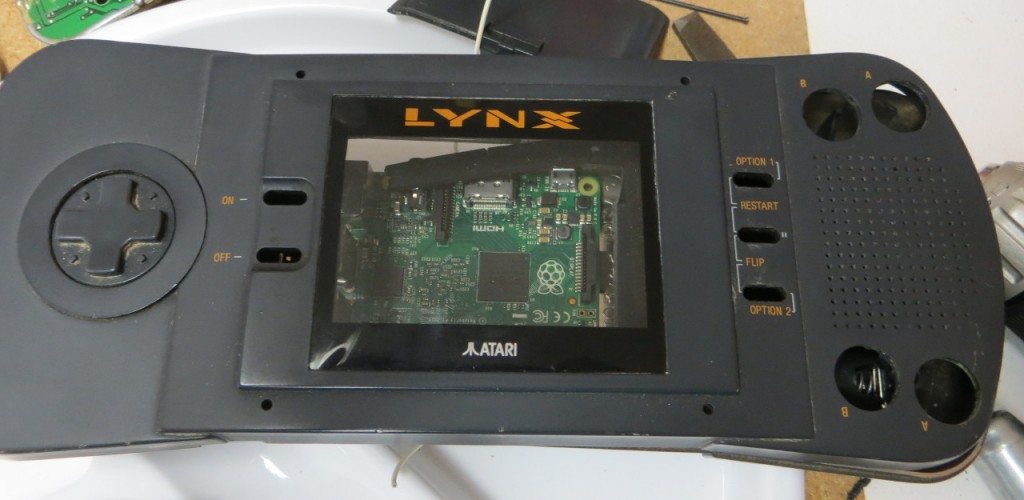
This site is to document the retro gaming consoles I am working on. The first console is in an Atari Lynx. The second console will be built into a Tiger Game.com portable gaming system. At their core is a Raspberry Pi running Retropi. Welcome, but, be warned, the homebrew hacked systems that I am creating require soldering to new and existing circuit boards. If you don’t like to solder, this is not the build for you. I will detail the parts that I use, where to get them, and provide schematics of the modifications made. I will also detail the tools you will need. I am sure you could modify these hacks to not use solder, but soldered connections take up a lot less space, which is at a premium with the portable retro gaming systems detailed here. There are a lot of portable game systems out there based on 3d printed cases, or the Atari Lynx 2, or the Sega Game Gear. I am creating this site since what I am building is unique, as far as I can tell.
As a little background, I am an electronics engineer by trade, which explains all the solder. Growing up, my first video game was the Atari 2600. This was followed by an Atari 800XL computer, an Atari 7800, Sega Master System, and the Atari Lynx, versions 1 and 2, and Nintendo Gameboy. The Lynx was years ahead of its time, with a color screen, stereo sound, and powerful, dedicated graphics processor. Performance wise, it was comparable to the Sega Genesis and more advanced than the Super Nintendo, all in a portable format. So, when my parents were clearing out the basement and asked if I wanted the original Lynx back, I said yes. Sadly, the unit was dead, and I was not willing to troubleshoot the system for hours to figure out what was wrong. Luckily, I have two Atari Lynx 2 units, so this was a perfect system to play with. I love the games I grew up with it, and it would be great to be able to play them all on the go. The Lynx 1 project turned out so well my younger brother asked if I could build a system for him as well.
He was able to scope out a little know portable system from 1997, the Tiger Electronics Game.com, pronounced game com. It has a horrible screen, but a great button layout and a nice, blocky design, which allows for extra room to work with.



